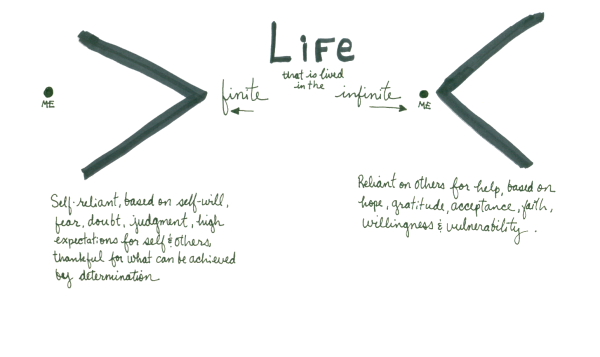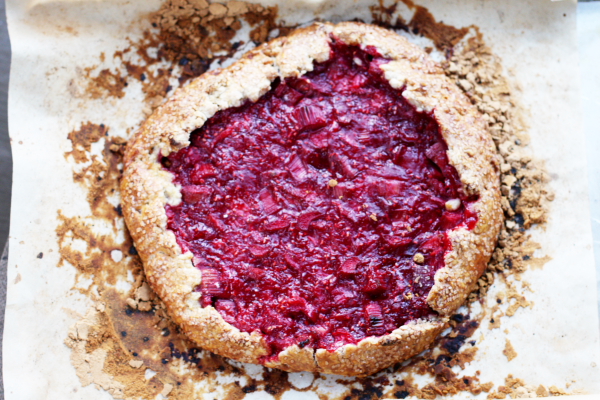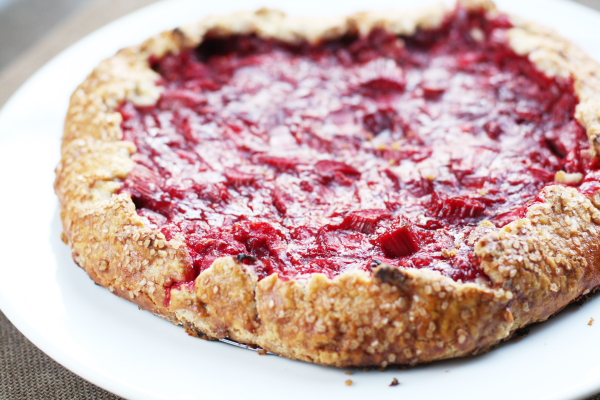
In the equation of life, I liked to put myself on the gaping side of the greater than symbol. To be greater than was the only option I could fathom. It was the strongest position to play. I was an army of one. I was the captain of my destiny. I was greater than any challenge. Should the test or dispute be too great for me, I ran from it. That’s why I avoided baking for so long. I walked away from the possibility of being less than a fallen cake, less than a dense loaf of bread, or less than a failed dessert.
But then I decided to do things a little differently. I started to run towards my fear. When I got too scared, I began to say so and ask for help. I might be strong, but I’m not bigger than the world around me. By admitting my weaknesses and owning up to my vulnerability rather than running away from it, I began to perceive the world in a new way. I started to see my life change. And not just in little ways. I stopped looking at fear as a closed door or a finite choice of NO, and began regarding fear as the gateway to the infinite possibility of YES.
It’s almost funny how I used to approach baking. I would reverse brag, and talk myself down about my inability to make a crust. I’d tell fictional tales based on fears about how I was constitutionally incapable of putting flour and butter together to create anything that resembled pastry. And yet, just the other day, I did just that.
All it took was a little whole wheat and unbleached all-purpose flours, sugar, salt, egg, milk, butter, fruit and a large dose of confidence. The result: a mixed wheat crust that’s earthy, light, and agrodolce (sweet and sour) from the balance of sweet berries and tart rhubarb. One slice to my friends and they rolled their eyes with delight because I proved myself wrong. I CAN bake. I do have the power to transfer love and comfort to their belly through something as beautiful as a Rhubarb and Mixed Berry Crostata.
I guess I shouldn’t be so surprised by the cascading changes that are happening. These little efforts are beginning to add up to something bigger. Ever since I commenced dealing with the core basics (flour, water, perspective, etc.), everything else has followed.
Facing my fear of baking (and everything else in between) is a pivot point that’s bringing about wide and sweeping transformation. With every crostata, each tea cake, and all the baked goods I pull from my oven I can feel my perspective shift from a finite point of view to one that’s much more infinite.
In a simple word I say “YES”, yes to the infinite possibility of it all.
Rhubarb and Mixed Fruit Crostata
Based on a recipe published in Bon Appetit by Karen DeMasco, Locanda Verde
8-10 servings, depending on how you cut it
Crust
1 cup unbleached all-purpose flour
½ cup whole wheat flour
1 ½ tbsp sugar
½ tsp kosher salt
1 ½ sticks chilled, unsalted butter. Cubed.
1 large egg
1 tbsp whole milk
Filling
¼ cup cornstarch
3 cups ½” thick sliced rhubarb
1 small container of raspberries
1 cup sliced strawberries
2/3 cup sugar
1 large egg, beaten
Raw sugar or Turbinado sugar for finishing
For the crust:
Combine the flours, sugar, and salt in a processor. Blend for 6 seconds. Add butter and pulse until it is broken down into pea-sized pieces. Whisk egg and milk in a small bowl; add the mixture to the processor and pulse until moist clumps form. Gather the dough into a round ball and then flatten into a disk. Cover with plastic wrap and chill for at least 1 ½ hours. This dough can be made up to two days ahead.
For the filling:
In a small bowl, dissolve the cornstarch in 3 tbsp of water; set aside. Combine the fruit, rhubarb and sugar in a heavy saucepan. Cook over medium heat. Stir often while the sugar dissolves and the fruit juices are released, about 4 minutes. Stir in cornstarch liquid and bring to a boil (rhubarb will not be tender and will not be broken down). Transfer mixture to a bowl. Chill until cool, about 30 minutes.
Preheat oven to 400˚. Roll out dough onto floured parchment paper until it reaches a 12″ round. Brush the dough with beaten egg. Mound the filling in the center of the crust and gently spread it out, leaving enough of a border for you to fold back the edges to form a crust. Gently fold back the edges (about an inch or more) over filling; pleat as necessary. Side parchment with crostata onto a large rimmed baking sheet and bake until the crust is golden brown and the filling bubbly, about 45 minutes. Let crostata cool on a baking rack. Cut into wedges.
Serve as a breakfast snack or, for a fancy dessert, add whipped cream or vanilla ice cream.


